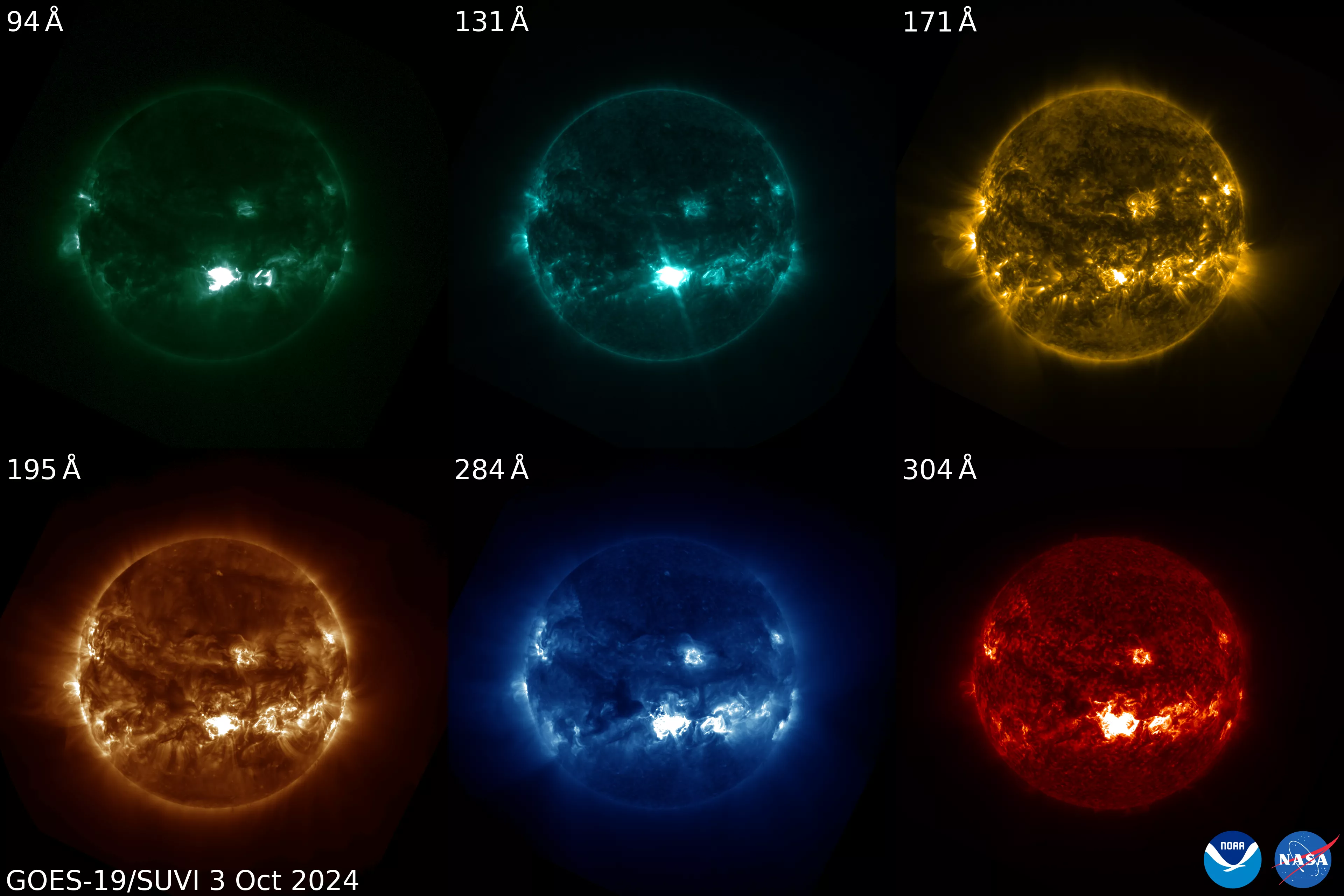
An X9 flare, which can be seen in the lower half of the sun, captured by GOES-19’s Solar Ultraviolet Imager (SUVI) instrument on Oct. 3, 2024. [Credit: NOAA]
Space weather impacts numerous facets of everyday life, including power grids, communications, airline operations, Global Positioning Systems (GPS), and satellites. In addition, there are a large variety of phenomena that are driven by the variability of the sun over periods ranging from hours to years.
Solar flares are large eruptions of electromagnetic radiation from the sun. They can last minutes or hours and can cause increased ionization in the lower layers of the Earth’s ionosphere. Coronal mass ejections (CMEs) are large masses of plasma and strong magnetic fields that shoot out from the sun’s corona. CMEs are often associated with solar flares and can cause geomagnetic storms on Earth. Both solar flares and CMEs usually occur near sunspots, areas of particularly strong magnetic forces on the surface of the sun.
NOAA’s Space Weather Prediction Center and Office of Space Weather Observations, as well as earlier space weather observers, have seen some amazing solar events over the years. Click the button below to see some of the most memorable.
